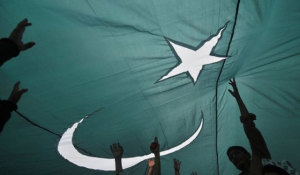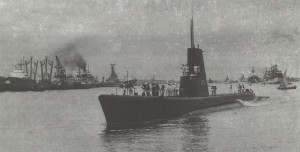Since partition of the sub-continent in 1947, Pakistan and India have fought four armed conflicts, in 1947, 1965, 1971 (which led to the establishment of Bangladesh, formerly East Pakistan) and the 1999 Kargil clash.
In 1965, India and Pakistan fought their second of three major wars from the issues arising from the control of Kashmir. This un-declared war broke out on August 15, 1965 and lasted until a UN-brokered cease-fire on September 22, 1965.
The war was inconclusive, costing the two sides a combined 7,000 human casualties but gaining them little.India, because of its size, population and strategic location has been trying to establish itself not only as a regional power but also as a global player. George K. Tanham, a US scholar, in his essay ‘Indian Strategic Thought: An Interpretative Essay’ has observed: ‘India’s strategic location, size, and tremendous population have contributed to Indian leaders’ belief in its greatness, its pre-eminence in the Indian Ocean region and its global importance.’
Following its well-documented strategy of “giantism”, India attacked Pakistan in the Lahore area at 0630 on 6th September 1965. Indian armed forces had a six-to-one superiority over the Pakistan defence forces with India having 867,000 soldiers as compared to Pakistan’s just 101,000 strong, spirited and professional soldiers.
While the Indo-Pakistan war-1965 saw Pakistan Air Force gaining superiority in air combat that gave Pakistan Army to fight with insurmountable willpower at Chawinda, Chumb, Sialkot sectors, Pakistan Navy did not lag behind in engaging Indian flotilla and bombarded Indian radar station at Dwarka.
“Operation Dwarka” as codenamed, will be long remembered in the annals of Pakistan Navy’s courageous expeditions, as on that day in 1965, the Pakistan Navy rose to the occasion; ever ready to perform its national commitment of defending the sea-frontiers of Pakistan.
The basic role of Pakistan Navy is to secure control of an area of the sea from any belligerent and containing enemy ships from approaching the coast and interfering with the trade and commerce. Pakistan Navy was already in the state of high alert providing seaward defence and within few minutes the ships cast away to perform the most sacred and singular duty of safe-guarding it’s Sea-frontiers from Indian aggression.
At that time, the Submarine Ghazi was the only submarine that the Pakistan Navy had in 1965. The PN submarine was deployed off Bombay to look after the heavy units of the Indian Navy. It spread a reign of terror in the rank and file of Indian warships and they could not come out of the harbour-including the aircraft carrier VIKRANT.
It was this blockade that enabled the Pakistan fleet to move in and blast the Indian naval fortress of Dwarka. The objectives of operation were: (a) to draw the heavy enemy units out of Bombay for the submarine GHAZI to attack; (b) to destroy the radar installation at Dwarka; (c) to lower Indian morale; (d) and to divert Indian Air effort away from the north. On 7 September 1965, PNS BABUR, PNS KHAIBAR, PNS BADR, PNS JAHANGIR, PNS ALAMGIR, PNS SHAHJAHAN and PNS TIPU SULTAN were tasked to be in position 293 degrees – 120 miles from Dwarka light house by 071800 E/Sep with maximum power available.
These ships carried out bombardment of Dwarka about midnight using 50 rounds per ship. At midnight, the ships were on Initial Position (IP) with all their guns loaded and the men ready to strike a historic strike on enemy’s face.
The city of Dwarka was completely blacked out and target could only be identified on radar. At 0024 bombardment was ordered to commence when ships were 5.5 to 6.3 miles from Dwarka light. It took only four minutes to complete the bombardment, firing altogether about 350 rounds on the target.
There was no appreciable resistance from the enemy and the ships safely arrived at their patrol area by 0635 on 8 Sep. According to some independent sources, one submarine, PNS Ghazi, kept the Indian Navy’s aircraft carrier INS Vikrant besieged in Bombay throughout the war.
Although the valiant expedition at Dwarka was a “limited engagement”, yet 4 ½ minutes of bombing at Dwarka had unprecedented implications on the morale of our troops.
The success of the Dwarka operation is attributed to the unflinching sense of alacrity to serve the nation beyond the call of duty marked by highest sense of patriotism and sacrifice.
Though the war was indecisive, India suffered much heavier material and personnel casualties compared to Pakistan. Many historians believe that had the war continued, with growing loss and decreasing supplies, India would have been eventually defeated.
Hard work over the past years had paid dividends. Our officers and sailors never allowed the numerical superiority and the weight of the armaments to effect their morale. Pakistan Navy Day is celebrated on 8th September every year throughout in Pakistan.
It is celebrated on the memory of martyred sailors who gave sacrifices of their life for the defence of the country. Pakistan Navy celebrates this day to tell the young generation of Pakistan that how sailors were brave at the critical time and were proud of offering sacrifices of their lives for the defence of Pakistan.
6th September 1965 remembers those who sacrificed their precious lives for the country and they are the source of inspiration to defend their country against any aggressor. Pakistan Navy derives immense source of motivation every time the month of September approaches.
Drawing inspiration from the unparallel conducts of the 1965’s war heroes, the naval personnel displayed personal example of valour during national catastrophes thereafter.
The lessons learnt from 1965 war, found its new dimensions when the navy sailors undertook the challenging and thrilling task with high spirits in the wake of floods-2011. Torrential rain and flash flooding continue to torment Pakistan’s Sindh province, affecting at least 700,000 people and forcing 60,000 from their homes till August 31, 2011.
The sailors of Pakistan Navy had been relentlessly shifting people from the dangerous places to the safer areas. The track record of Pakistan Navy was that it had rendered very useful services in rescuing and rehabilitating the victims after every inland flood, internal strife, bomb blast disposal, anti-dacoit operations, train accidents, etc.
Many equate the spirit manifested by the sailors during the most recent natural catastrophes like “Tsunami-2004”, “Pakistan Earthquake-2005” and “Pasni flash floods” with that of 1965 fervour. They are right in doing so, as the personal example of valour set by the naval officers and personnel during these national contingencies, revived the memories of the spirit exhibited in 1965 war. Pakistan Navy has been proactively engaged in eradicating the international piracy and succeeded in thwarting number of piracy attempts, like, support to MV SUEZ by PNS BABUR, rescuing Panama Flag Carrier MSC KALINA from 5 pirate skiffs. The latest episode of terrorist attack on PNS Mehran (a heavily guarded facility of Pakistan Navy, located along Shahrah-e-Faisal) by 10 armed militants, was successfully countered by the brave PN commandoes and security personnel.
Pakistan Navy was crafted out of Royal Indian Navy by Forces Reconstruction Committee (AFRC) on the Independence Day of Pakistan. The Pakistan Navy was given charge of two sloops, two frigates, four minesweepers, two trawlers, four harbour launches with some 3580 personnel consisted of 180 officers and 3400 sailors.
Since then Pakistan Navy has been a proud defender of Pakistani waters and has never let any enemy vessel offend the 700 km long shore line of Pakistan along Sindh and Balochistan.
Pakistan Navy today, has become a responsible four-dimensional force: Surface ships; aircraft; submarines and the Special Service Group of Navy/Marines. Pakistan Navy is boosting these four components through intensive training, induction of new sophisticated sensors and equipment in line with modern trends, especially surveillance through maritime Unmanned Air Vehicles.
The induction of indigenously made F-22P frigates, “QING” class 6 nuclear sub-marines, fast attack ‘Stealth’ Craft” equipped with 8 surface-to-surface missiles from China and the acquisition of six modified P3C aircraft with latest avionics/sensors from United States into
Pakistan Navy will significantly add to the combat potential of Pakistan Navy
Fleet. Today, Pakistan Navy is proudly defending the sea-frontiers as well as protecting the maritime interests of Pakistan.
Pakistan Navy’s submarine arm has a great fighting tradition and has created a name for itself in combat. During the 1965 Indo-Pak War, when Pakistan had only one submarine, acquired a year earlier, it was able to bottle-up the Indian Navy while operating outside Bombay (Mumbai) harbour. It was a vertual blockade conducted not against merchant ships but against Naval ships who were reluctant to leave the safety of ports for fear of a lone submarine PNS-M GHAZI, operating in Indian territorial waters outside Bombay.
PNS-M GHAZI under the Command of Commander (Later Admiral) K.R. Niazi operated in Indian territorial waters from 6 to 23 September 1965 and sank two two Indian Warships during the period. The officers and sailors of GHAZI including her Captain were given ten operational awards for gallantry in operations during combat. These included two Sitara-i-Jurat and two Tamgha-i-Jurat.
On the second day of the 1965 Indo-Pak War, Pakistan Naval flotilla ships, BABUR, BADR, KHAIBAR, TIPPU SULTAN, SHAH JAHAN, JAHANGIR and ALAMGIR sailed out of Karachi and headed south towards the Indian Naval base at Bombay. The flotilla was under Commodore S. M. Anwar, Commander of the fleet who flew his flag on board the Cruiser PNS BABUR. The object of this deep sea-foray was to entice the Indian Navy out of their ports and give them battle at Sea. Where they could be dealt with by the submarine GHAZI in conjunction with the surface fleet. The Indian Navy’s Western flotilla based in Bombay stayed in port, discretion being the better part of valour, and did not accept battle. On its return passage the Pakistan flotilla bombarded the port of Dwarka hoping that the Indian Naval frigate TALWAR would sail out from Okka next door. But TALWAR also decided to stay in port.
Pakistan Navy’s performance in the 1965 Indo-Pak War is vividly described by India’s Vice Admiral Mihir Roy, a former Commander of the aircraft carrier VIKRANT and Commander-in-Chief of India’s Eastern Naval Command, in his book ‘War in the Indian Ocean’ published in 1995. He writes, ‘But the Bombayites failed to understand the lack of success by the Indian fleet, especially with sirens wailing, Jamnagar attacked and Dwarka shelled. But nonetheless, the naval bombardment of Dwarka with the Indian fleet still preparing to sail was an affront to the sailors in white, who could not understand what was holding the fleet back’.
Source: http://defence.pk/threads/pakistan-navy-submarines-a-silent-force-to-reckon-with.34672/#ixzz3Cc9vWPPk







